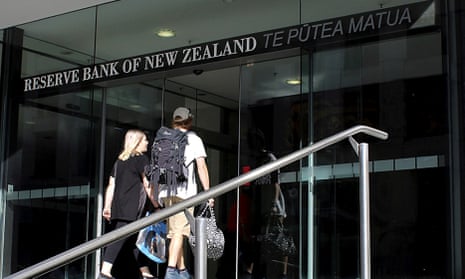New Zealand’s reserve bank has forecast that the country will tip into recession in 2023, and has lifted the official cash rate by an unprecedented 75 basis points, to 4.25%.
The cash rate hike, announced on Wednesday, is the largest in the central bank’s history, and comes as it attempts to rein in New Zealand’s 7.2% inflation rate.
“Inflation is no one’s friend,” Reserve Bank governor Adrian Orr said in a press conference after the announcement. “In order to rid country of inflation we need to reduce spending levels.”
The latest hike will cause concern among New Zealand’s highly leveraged homeowners, many of whom will soon have to refinance their mortgages at far higher interest rates than they had been paying, and have no short-term relief in sight.
The bank, which had previously predicted the cash rate would peak at 4%, is now forecasting that the rate will continue to rise, peaking at 5.5% next year, and remaining at that level for about 15 months before dropping.
The bank has raised the cash rate nine times in a row. Wednesday’s rise will be the last of the year.
The official cash rate is the rate at which the central bank lends money to commercial banks, so can influence the rate at which those banks lend – including the interest rates paid on mortgages.
New Zealand’s housing market is unusually vulnerable to those fluctuations: with an extremely expensive housing market, high levels of debt, and short-term mortgage rate fixing. The market has long struggled with affordability – according to the IMF’s October 2022 Global Financial Stability Report, New Zealand has one of the world’s highest price to income ratios.
The country also typically fixes mortgage rates for short terms of 1-3 years. About half of New Zealand’s mortgages are up for refinancing in the next year, and many of those borrowers may have last fixed their mortgages at the rock-bottom interest rates of 2019 – meaning a large chunk of mortgaged homeowners are now facing substantial rises in their mortgage repayments.
In its monetary statement, the Reserve Bank was also forecasting a recession in 2023, stretching into 2024.
Orr said the bank was predicting a “shallow recession”, with GDP down roughly half a percentage point in the second quarter of 2023, and down around another 0.3 following on from there.
National finance spokesperson Nicola Willis said in a statement that the outlook was grim for New Zealand’s economy.
“Ominously, the Reserve Bank is not only forecasting a year-long recession, but it believes inflation has not peaked, and will still be higher at the start of next year than it is now.”
“This spells yet more worry for the growing group of kiwis being kept up at night concerned about the growing size of their mortgage payments,” she said.
New Zealand’s reserve bank has typically been more aggressive in countering inflation than its Australian counterparts; according to the reserve bank’s financial statement, it had also considered a rise of a full 100 basis points.
At the start of November, Australia’s reserve bank lifted the cash rate by 25 basis points to 2.85%, the highest since early May 2013, despite an inflation rate of 7.3%, in line with New Zealand’s.
